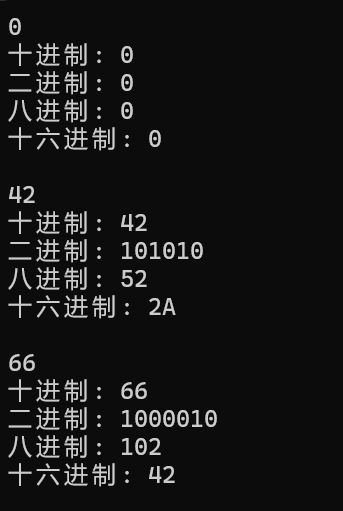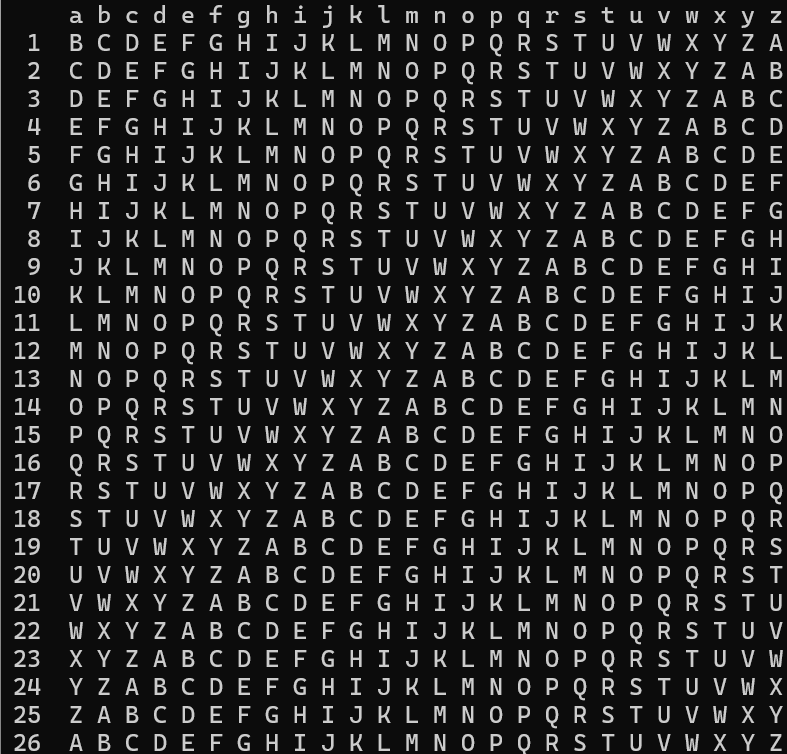实验一 现代C++ 基础编程
task1
代码:

#include <iostream> #include <string> #include <vector> #include <algorithm> using namespace std; // 声明 // 模板函数声明 template<typename T> void output(const T &c); // 普通函数声明 void test1(); void test2(); void test3(); int main() { cout << "测试1: \n"; test1(); cout << "\n测试2: \n"; test2(); cout << "\n测试3: \n"; test3(); } // 函数实现 // 输出容器对象c中的元素 template <typename T> void output(const T &c) { for(auto &i: c) cout << i << " "; cout << endl; } // 测试1 // 组合使用算法库、迭代器、string反转字符串 void test1() { string s0{"0123456789"}; cout << "s0 = " << s0 << endl; string s1{s0}; reverse(s1.begin(), s1.end()); // 反转指定迭代器区间的元素 cout << "s1 = " << s1 << endl; string s2{s0}; reverse_copy(s0.begin(), s0.end(), s2.begin()); // 将指定迭代区间的元素拷贝到指定迭代器开始的目标区间,并且在复制过程中反转次序 cout << "s2 = " << s2 << endl; } // 测试2 // 组合使用算法库、迭代器、vector反转动态数组对象vector内数据 void test2() { vector<int> v0{2, 0, 4, 9}; cout << "v0: "; output(v0); vector<int> v1{v0}; reverse(v1.begin(), v1.end()); cout << "v1: "; output(v1); vector<int> v2{v0}; reverse_copy(v0.begin(), v0.end(), v2.begin()); cout << "v2: "; output(v2); } // 测试3 // 组合使用算法库、迭代器、vector实现元素旋转移位 void test3() { vector<int> v0{0, 1, 2, 3, 4, 5, 6, 7, 8, 9}; cout << "v0: "; output(v0); vector<int> v1{v0}; rotate(v1.begin(), v1.begin()+1, v1.end()); // 旋转指定迭代器区间[v1.begin(), v1.end())之间的数据项,旋转后从迭代器v1.begin()+1位置的数据项开始 cout << "v1: "; output(v1); vector<int> v2{v0}; rotate(v2.begin(), v2.begin()+2, v2.end()); cout << "v2: "; output(v2); vector<int> v3{v0}; rotate(v3.begin(), v3.end()-1, v3.end()); cout << "v3: "; output(v3); vector<int> v4{v0}; rotate(v4.begin(), v4.end()-2, v4.end()); cout << "v4: "; output(v4); }
运行截图:

task2
代码:

#include <iostream> #include <vector> #include <string> #include <algorithm> #include <numeric> #include <iomanip> using namespace std; // 函数声明 // 模板函数声明 template<typename T> void output(const T &c); // 普通函数声明 int rand_int_100(); void test1(); void test2(); int main() { cout << "测试1: \n"; test1(); cout << "\n测试2: \n"; test2(); } // 函数实现 // 输出容器对象c中的元素 template <typename T> void output(const T &c) { for(auto &i: c) cout << i << " "; cout << endl; } // 返回[0, 100]区间内的一个随机整数 int rand_int_100() { return rand() % 101; } // 测试1 // 对容器类对象指定迭代器区间进行赋值、排序 void test1() { vector<int> v0(10); // 创建一个动态数组对象v0, 对象大小为10 generate(v0.begin(), v0.end(), rand_int_100); // 产生[0, 100]之间的随机整数赋值给指定迭代器区间[v0.begin(), v0.end())内的每个数据项 cout << "v0: "; output(v0); vector<int> v1{v0}; sort(v1.begin(), v1.end()); // 对指定迭代器区间[v1.begin(), v1.end())内数据项进行升序排序 cout << "v1: "; output(v1); vector<int> v2{v0}; sort(v2.begin()+1, v2.end()-1); // 对指定迭代器区间[v1.begin()+1, v1.end()-1)内数据项进行升序排序 cout << "v2: "; output(v2); } // 测试2 // 对容器类对象指定迭代器区间进行赋值、计算最大值/最小值/均值 void test2() { vector<int> v0(10); generate(v0.begin(), v0.end(), rand_int_100); cout << "v0: "; output(v0); auto iter1 = min_element(v0.begin(), v0.end()); cout << "最小值: " << *iter1 << endl; auto iter2 = max_element(v0.begin(), v0.end()); cout << "最大值: " << *iter2 << endl; auto ans = minmax_element(v0.begin(), v0.end()); cout << "最小值: " << *(ans.first) << endl; cout << "最大值: " << *(ans.second) << endl; double avg1 = accumulate(v0.begin(), v0.end(), 0)/v0.size(); cout << "均值: " << fixed << setprecision(2) << avg1 << endl; cout << endl; vector<int> v1{v0}; cout << "v0: "; output(v0); sort(v1.begin(), v1.end()); double avg2 = accumulate(v1.begin()+1, v1.end()-1, 0)/(v1.size()-2); cout << "去掉最大值、最小值之后,均值: " << avg2 << endl; }
运行截图:

task3
代码:

#include <iostream> #include <string> #include <algorithm> bool is_palindrome(std::string s); int main() { using namespace std; string s; while(cin >> s) // 多组输入,直到按下Ctrl+Z后结束测试 cout << boolalpha << is_palindrome(s) << endl; } bool is_palidrome(std::string s){ using namespace std; string s1{s}; reverse(s1.begin(),s1.end()); if(s1==s) return true; else return false; }
运行截图:

task4
代码:

#include <iostream> #include <cstring> #include <algorithm> std::string dec2n(int x, int n = 2); int main() { using namespace std; int x; while(cin >> x) { cout << "十进制: " << x << endl; cout << "二进制: " << dec2n(x) << endl; cout << "八进制: " << dec2n(x, 8) << endl; cout << "十六进制: " << dec2n(x, 16) << endl << endl; } } std::string dec2n(int x,int n){ using namespace std; if(x==0)return "0"; string str; string i="0123456789ABCDEF"; while(x>0){ int j=x%n; x=x/n; str=str+i[j]; } reverse(str.begin(),str.end()); return str; }
运行截图:

task5
代码:

#include<iostream> #include<string> #include<vector> #include<algorithm> #include<iomanip> using namespace std; int main(){ cout<<" "; for(int i=0;i<26;i++) cout<<(char)(i+97)<<" "; cout<<endl; vector<char> v0{'A','B','C','D','E','F','G','H','I','J','K','L','M','N','O','P','Q','R','S','T','U','V','W','X','Y','Z'}; for(int i=1;i<27;i++){ vector<char> v1{v0}; rotate(v1.begin(),v1.begin()+i,v1.end()); cout<<setw(2)<<i<<" "; for(int j=0;j<26;j++){ cout<<" "<<v1[j]; } cout<<endl; } }
运行截图:

task6
代码:

#include<iostream> #include<stdlib.h> #include<time.h> #include<iomanip> using namespace std; int main(){ int a,b,c,d,t; double score=0; srand(time(NULL)); for(int i=0;i<10;i++){ a=rand()%10; b=rand()%10; t=rand()%4; if(t==1&&a<b) t=0; if(t==3&&a%b!=0) t=2; switch(t){ case 0:cout<<a<<"+"<<b<<"=";c=a+b;break; case 1:cout<<a<<"-"<<b<<"=";c=a-b;break; case 2:cout<<a<<"*"<<b<<"=";c=a*b;break; case 3:cout<<a<<"/"<<b<<"=";c=a/b;break; } cin>>d; if(c==d) score=score+10; } cout<<fixed<<setprecision(2)<<score<<"%"<<endl; }
运行截图:





